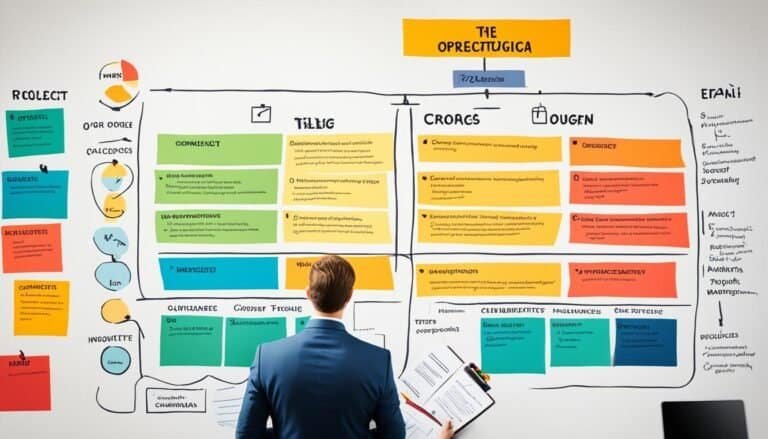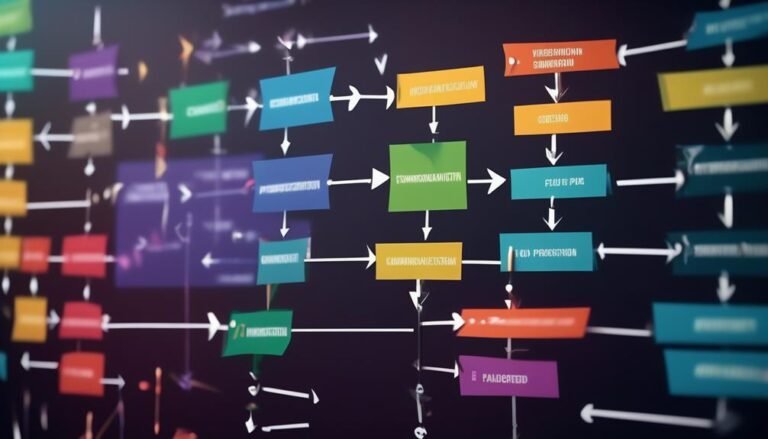Feasibility Study: Assessing Your Project's Viability
In the world of business, embarking on a new project requires careful consideration and strategic planning to ensure its success. One crucial step in this process is conducting a feasibility study to assess the viability of the project.
This study serves as a crucial tool to determine whether a project is feasible, financially and operationally, before committing substantial resources to it. By examining key components such as market analysis, financial considerations, and risk assessment, a feasibility study provides invaluable insights that can guide decision-making and help mitigate potential challenges.
In this discussion, we will explore the importance and benefits of conducting a feasibility study, as well as the key components necessary for assessing a project's viability, leaving you eager to uncover the secrets behind a successful feasibility study.
Key Takeaways
- Feasibility studies are essential in determining the practicality and potential success of a project, helping stakeholders make informed decisions.
- Market analysis is a crucial component of feasibility studies, as it evaluates demand, identifies competitors, and understands market trends.
- Financial analysis plays a vital role in assessing the financial feasibility of a project, analyzing costs, potential return on investment, and ensuring sufficient funds.
- Risk assessment and mitigation strategies are necessary to identify and prioritize potential risks, develop contingency plans, and monitor project progress to increase the chances of success.
Importance of Feasibility Studies
Feasibility studies play a crucial role in assessing the viability of a project. These studies are conducted to determine the practicality and potential success of a project before any significant resources are invested. By examining various factors such as market demand, financial projections, technical requirements, and legal considerations, a feasibility study helps stakeholders make informed decisions about the project's feasibility.
One of the key benefits of conducting a feasibility study is that it provides a comprehensive assessment of the project's viability. It helps identify potential risks, challenges, and limitations that may hinder the project's success. This assessment allows project managers to develop contingency plans and make informed decisions to mitigate risks and maximize the project's chances of success.
Moreover, a feasibility study helps in evaluating the financial feasibility of a project. By analyzing the projected costs and potential revenues, stakeholders can assess the project's financial viability. This information is crucial for securing funding and making financial decisions related to the project.
Furthermore, a feasibility study provides a structured framework for evaluating and prioritizing different project alternatives. It helps stakeholders compare different options and select the most viable one based on objective criteria and analysis. This systematic approach ensures that resources are allocated efficiently and that projects with the highest likelihood of success are pursued.
Key Components for Assessment
After conducting a feasibility study to assess the viability of a project, the next step is to analyze the key components for assessment. This step is crucial in order to ensure effective risk management and project evaluation.
Here are five key components that should be considered during the assessment process:
- Market Analysis: This involves evaluating the demand for the product or service in the target market, identifying potential competitors, and understanding the market trends and dynamics.
- Financial Analysis: This component focuses on assessing the financial feasibility of the project, including analyzing the projected costs, revenues, and potential return on investment.
- Technical Analysis: This component examines the technical aspects of the project, such as the availability of required resources, the technological feasibility, and any potential challenges or limitations.
- Organizational Analysis: This involves assessing the capabilities and resources of the organization to successfully execute the project, including evaluating the team's skills and expertise, as well as the organizational structure and culture.
- Legal and Regulatory Analysis: This component examines the legal and regulatory requirements that may impact the project, ensuring compliance with applicable laws and regulations.
Market Analysis and Demand Evaluation
Market analysis and demand evaluation are crucial components when assessing project viability. By analyzing market trends, businesses can gain valuable insights into customer preferences, competitor strategies, and potential opportunities.
Moreover, identifying the target audience allows for effective marketing strategies and tailored product offerings, ensuring a higher probability of meeting customer demand and achieving business success.
Market Trends and Analysis
To accurately assess the viability of a project, it is crucial to conduct a comprehensive analysis of current market trends and evaluate the demand for the proposed product or service. This involves examining various factors such as competitive analysis and customer segmentation.
Here are five key points to consider in market trends and analysis:
- Competitive analysis: Understand the competitive landscape, including a thorough examination of direct and indirect competitors.
- Customer segmentation: Identify and categorize target customers based on their demographics, behaviors, and preferences.
- Market size and growth potential: Determine the overall size of the market and its potential for growth.
- Market trends: Stay updated on the latest trends and shifts in consumer behavior, technology advancements, and regulatory changes.
- Demand evaluation: Assess the demand for the proposed product or service by conducting surveys, focus groups, or market research.
Identifying Target Audience
Having conducted a comprehensive analysis of current market trends and evaluated the demand for the proposed product or service, the next step is to identify the target audience through market analysis and demand evaluation.
This involves conducting demographic research and customer profiling to gain a deep understanding of the potential customers. Demographic research focuses on gathering data about the age, gender, income level, education, and other relevant characteristics of the target audience.
Customer profiling, on the other hand, delves into understanding the psychographic and behavioral aspects of the target audience, such as their interests, values, lifestyle, and purchasing behaviors.
Financial Considerations and Projections
The financial considerations and projections are crucial components in assessing the viability of a project. Cost analysis helps in identifying the expenses associated with the project, including fixed and variable costs.
On the other hand, revenue forecasting involves estimating the potential revenue streams the project can generate based on market demand and pricing strategies.
Cost Analysis
Financial considerations and projections play a crucial role in conducting a comprehensive cost analysis for assessing project viability. When analyzing the costs associated with a project, it is essential to consider various factors such as cost estimation and budget planning. Here are five key points to keep in mind:
- Accurate cost estimation: Thoroughly analyze the project's requirements and break down the costs involved in each aspect.
- Comprehensive budget planning: Develop a detailed budget that covers all expenses, including labor, materials, equipment, and overhead costs.
- Contingency planning: Account for unexpected expenses or changes in scope by including a contingency budget.
- Cash flow projections: Evaluate the project's anticipated revenue and expenses over time to ensure sufficient funds are available.
- Return on investment (ROI) analysis: Assess the potential financial benefits of the project to determine its profitability.
Revenue Forecast
After thoroughly analyzing the costs associated with the project and developing a comprehensive budget, the next step in assessing project viability involves forecasting the potential revenue.
Revenue projection is a crucial component of the financial forecast, as it provides an estimate of the expected income that the project will generate over a specific period. This forecast is based on various factors such as market demand, pricing strategies, and competition.
It is essential to consider both the short-term and long-term revenue potential to accurately assess the project's viability. By understanding the projected revenue, stakeholders can evaluate the project's profitability and make informed decisions regarding its feasibility.
A well-developed revenue forecast provides valuable insights into the financial viability of a project and helps guide strategic planning and decision-making processes.
Risk Assessment and Mitigation Strategies
Effective risk assessment and mitigation strategies are essential for ensuring the viability of a project. Without proper risk management, a project may face unexpected challenges and fail to achieve its objectives. To mitigate potential risks, project managers should develop contingency plans and implement strategies to minimize the impact of these risks.
Here are five key items to consider when assessing and mitigating project risks:
- Identify and prioritize potential risks: Conduct a thorough analysis to identify all possible risks that could arise during the project lifecycle. Prioritize these risks based on their potential impact and likelihood of occurrence.
- Develop contingency plans: Create contingency plans that outline specific actions to be taken if a risk eventuates. These plans should include clear steps, responsibilities, and timelines for resolution.
- Implement risk mitigation strategies: Implement proactive measures to reduce the likelihood or impact of identified risks. This may involve implementing additional controls, conducting regular monitoring, or seeking expert advice.
- Communicate and involve stakeholders: Ensure open and transparent communication with all project stakeholders regarding identified risks and mitigation strategies. Involve relevant stakeholders in decision-making processes to gain their support and expertise.
- Monitor and review: Continuously monitor the project's progress and reassess risks as new information becomes available. Regularly review the effectiveness of implemented mitigation strategies and adjust them as necessary.
Benefits of Conducting a Feasibility Study
To ensure the long-term viability of a project and effectively manage potential risks, conducting a feasibility study offers valuable insights and strategic guidance.
One of the key benefits of conducting a feasibility study is customer validation. By assessing the target market and gathering feedback from potential customers, a feasibility study helps to validate the demand for the proposed project or product. This validation is crucial in determining whether the project is likely to succeed in the market and attract a sufficient customer base.
Another significant benefit of conducting a feasibility study is the identification of competitive advantage. Through a thorough analysis of the market landscape, including competitors and industry trends, a feasibility study helps to identify unique selling propositions and areas where the project can differentiate itself from competitors. This information is critical in shaping the project's strategy and positioning in the market, ultimately increasing its chances of success.
Furthermore, a feasibility study provides a comprehensive evaluation of the project's technical, financial, and operational aspects. It helps to identify potential risks and challenges and provides recommendations to mitigate them. This structured approach allows project stakeholders to make informed decisions and allocate resources effectively.
Conclusion
In conclusion, conducting a feasibility study is crucial for assessing the viability of a project.
By evaluating market analysis, financial considerations, and risk assessment, organizations can make informed decisions about the potential success of their initiatives.
It is like a compass that guides them through the uncertain terrain of business, helping them navigate the challenges and make strategic decisions that will lead to a successful outcome.







